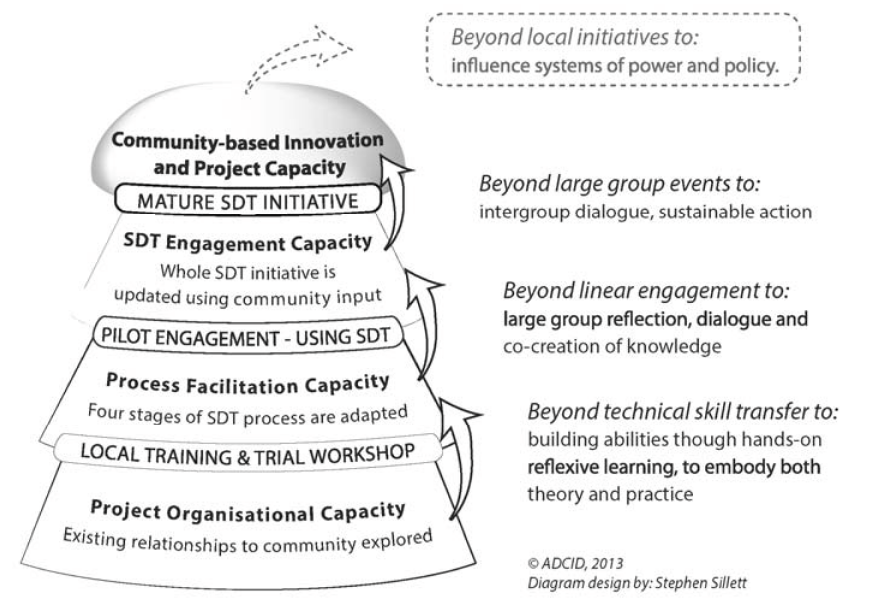Figure 1: Phases of an initiative using Socio-Drama Topography (SDT) process (Diagram by Stephen Sillett)
Physically experiencing the system and dramatizing situations are two aspects I have really missed in all the methods that engage the whole system, the so called Large Group Intervention Methods. Socio-Drama Topography (SDT) is filling this gap in a sophisticated way. It is a relatively new method and I had not heard about SDT until recently, when Stephen Sillett sent me a book chapter about SDT. I think it is one of the best articles concerning working with the whole system I have seen in a long time. And I have read many articles for my PhD research on effective use of Large Scale Interventions. The title of the book chapter is Looking beyond needs: Capacity focused development through the Socio-Drama Topography Process, by Stephen Sillett and Jennifer Jimenez, published in the book Knowledges in Publics: Beyond Deficit, Engagement & Transfer (Eds. Lorraine Locke & Simon Locke, Cambridge Scholars Publishing, 2013).
Why do I find this article so special? First of all it is well written, connecting theory and practice. Second, it brings answers to some challenges I experience in participatory work with the whole system of stakeholders:
- The dominance of verbal dialogue and lack of bodily movement in most Large Group Intervention methods. People are asked to sit still and talk, while the largest component of group communication is non-verbal.
- How to make the change process sustainable and ongoing after the formal change project has ended.
There are many methods for working with large groups of stakeholders, see www.largescaleinterventions.com. The best known are Open Space, World Café, Future Search, Real Time Strategic Change/Whole Scale Change and Search Conference. Although these methods claim to address the whole person with head, heart and hands, the physical and creative aspects get little attention. Working with drama techniques not only addresses the whole of our body, it also makes it possible to try out new ways of working, including the way we use our space. Stephen Sillett calls it ‘spatial sensemaking’. The ‘Topography’ refers to the landscape metaphors used in the process.
Figure 2: Stages of readiness for a project utilising the SDT process and capacities achieved through external technical support (Diagram by Stephen Sillett)
Socio-drama Topography (SDT) is about a process, not a technique or single event. It involves several progressing stages of capacity building in the system. Training local facilitators, getting to know the local culture and building trust are important elements in the process. What the system is, who should be invited to participate, is defined by the issue or challenge at stake. Basic question is ‘Who do we need for success?’. Figure 2 illustrates the stages of readiness of the system, how the process facilitates ‘maturation’, step by step. This resonates with me. I think it is one the most neglected aspects in interventions for organisational change: people will only do what they are ready, willing and able to do, as I learned from Marvin Weisbord and Sandra Janoff. The system has to be mature enough for a specific intervention. Only when requirements in the bottom level are met, the process can be taken to the next level. Or as Piaget used to say: you first learn to crawl, then you learn to walk. See also the Logic of Feeling, a theory that explains how living systems develop steering capacity for dealing with challenges. My research on effective use of Large Scale Interventions shows that without building capacity for new ways of working and for reflective communication, the change is very likely to deliver only short-term effects.
Read more about the SDT process in the book, or on the website of ADCID. For questions, discussions and sharing information you can join the Linkedin group Aiding Dramatic Change in Development, or email stephen@adcid.org.
As far as I know SDT is being applied for community development. I see many possibilities for SDT in organisations and networks. Who is going to take the plunge?

